45 Chef-Approved Tricks So Strange You’ll Wonder How They Actually Work for Home Cooks
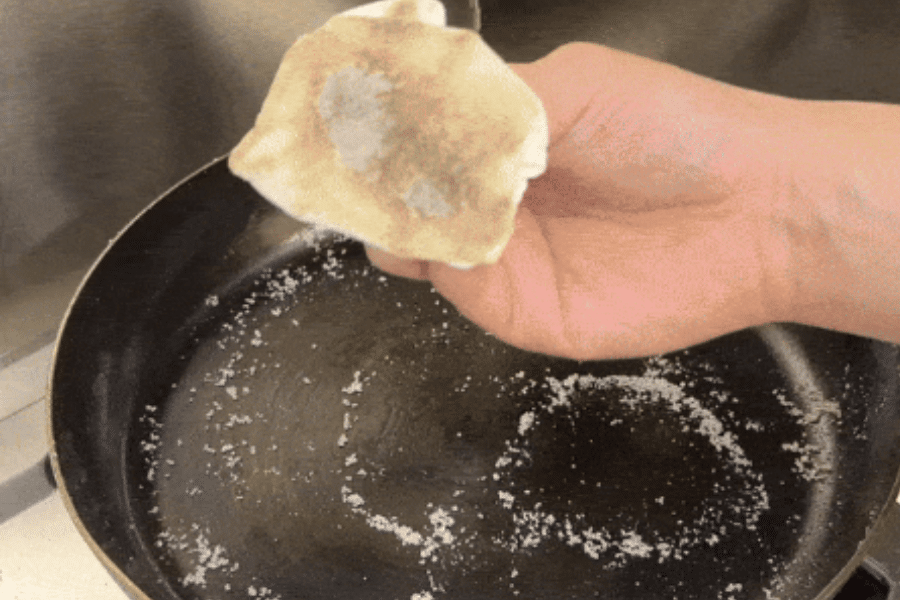
Get ready to discover some chef cooking tricks that will totally change the way you cook at home. These tips are quirky but super effective, making your kitchen time more fun and productive!
Freezing Herbs in Oil

Freezing herbs in olive oil is a clever way to keep their flavor fresh. Just chop your favorite herbs, place them in an ice cube tray, and cover with oil before freezing. This trick lets you add a burst of flavor to your dishes anytime.
When you freeze herbs in oil, you also protect their color and aroma. This method is perfect for herbs like basil, thyme, and rosemary that can lose their essence when dried. Simply pop out a cube and toss it into your cooking for instant seasoning.
Another great thing about freezing herbs in oil is that it helps preserve their nutrients. Fresh herbs often lose vitamins when dried, but freezing locks them in. This technique is a handy chef cooking trick to keep your meals tasty and nutritious.
Using Coffee Grounds

Repurposing used coffee grounds as a natural meat tenderizer is a clever trick. The acidity in the coffee helps break down tough fibers, making your meat tender and juicy. It’s an easy way to add an extra step to your cooking routine.
Another great benefit of using coffee grounds is the added flavor they bring to your meat. The rich, deep flavor of coffee can enhance the taste of your dish, making it more complex and interesting without overpowering the other ingredients.
Besides tenderizing and adding flavor, coffee grounds are also an eco-friendly option. By reusing your coffee grounds, you reduce waste and make the most out of your resources. It’s a small step towards more sustainable cooking practices.
Microwaving Citrus

Microwaving citrus fruits for 10-20 seconds can help you get more juice out of them. The heat softens the fruit, making it easier to squeeze and get every last drop of juice.
If you struggle with juicing citrus fruits, try microwaving them first. This simple trick can make a big difference, especially when you need a lot of juice for a recipe.
Another benefit of microwaving citrus fruits is that it can make the rind easier to zest. The heat loosens the peel, which can be helpful if you need zest for baking or cooking.
Baking Soda in Omelets

Adding a pinch of baking soda to your omelets can make them extra fluffy. This is because baking soda reacts with the eggs, creating a lighter texture. It’s a simple chef cooking trick that can elevate your breakfast game.
Mixing baking soda with eggs causes a chemical reaction that produces tiny bubbles. These bubbles expand during cooking, making the omelet puff up. It’s an easy way to achieve restaurant-quality fluffiness at home.
You don’t need much baking soda to see the effect—just a small pinch will do the trick. Too much might alter the taste, so be careful. This small addition can make a big difference in how your omelets turn out.
Salting Pineapple

Adding a pinch of salt to pineapple can make it taste sweeter. The salt cuts down the fruit’s natural bitterness, enhancing its flavor. This simple trick is popular among chefs and food enthusiasts alike.
When you sprinkle salt on pineapple, it draws out the fruit’s juices, intensifying its sweetness. This method is easy and quick, making it a favorite for those who love experimenting with flavors.
Besides reducing bitterness, salting pineapple can also balance its tartness. This technique is not only effective but also a fun way to enjoy the fruit in a new and exciting manner.
Rolling Citrus Fruits

Before juicing citrus fruits, roll them on the counter. This simple trick helps break down the fruit’s cell walls, making it easier to get more juice out.
Rolling citrus fruits before juicing can make a big difference. The pressure helps to loosen up the juice inside, so you can extract it with less effort.
Give your citrus fruits a good roll on the counter before juicing. This method ensures you get the maximum amount of juice, making your cooking or drink preparation more efficient.
Freezing Cheese

Grating cheese before freezing it helps prevent clumps. This makes it easier to store and use in recipes later. Just take out the amount you need, and it will thaw quickly for cooking.
Frozen grated cheese is perfect for topping dishes like pasta and casseroles. It melts evenly and saves you the hassle of grating cheese when you’re in the middle of cooking.
To keep your cheese fresh in the freezer, store it in an airtight container or a sealed plastic bag. This helps maintain its flavor and texture until you’re ready to use it.
Vinegar for Fluffy Rice

Adding a splash of vinegar to your rice cooking water can make a big difference. The acidity helps separate the grains, so they don’t stick together. This simple trick can make your rice much more enjoyable.
When you cook rice, a little bit of vinegar can help keep it from clumping. The vinegar’s acid works to keep the grains apart, making the rice fluffier. It’s an easy way to improve your cooking.
Using vinegar in your rice water is a smart move. The acid in the vinegar stops the grains from sticking, resulting in fluffier rice. This tip is one of those chef cooking tricks that can elevate your dishes.
Chilling Onions

If you find yourself tearing up while chopping onions, try refrigerating them first. The cold temperature helps slow down the release of the chemicals that cause tears, making the process a bit more comfortable.
Another trick to reduce tears when chopping onions is to use a sharp knife. A sharp blade cuts through the onion more cleanly, releasing fewer tear-inducing chemicals and keeping your eyes happier.
You can also try cutting onions under running water or near a vent. This helps to wash away or disperse the chemicals before they reach your eyes, making the chopping experience more pleasant.
Mustard in Mac and Cheese


Adding a spoonful of mustard to your mac and cheese can give it an extra kick. This simple trick brings out the cheese flavor without taking over the dish. It’s a well-kept secret among chef cooking tricks.
Mustard, especially Dijon or yellow mustard, blends well with the creamy texture of mac and cheese. It adds a tangy flavor that balances the richness of the cheese, making each bite more exciting and flavorful.
Beyond just taste, mustard can also improve the appearance of your mac and cheese. A hint of mustard can enhance the color, giving your dish a more appealing look. This small addition can make a big difference in your cooking.
Using Mayo on Grilled Cheese

Switching to mayo instead of butter for your grilled cheese can make a big difference. Mayo spreads more evenly and gives the bread a golden, crispy finish. Plus, it adds a slight tangy flavor that complements the melted cheese perfectly.
When you use mayo on the outside of your bread, it creates a barrier that helps lock in the moisture. This keeps the bread from getting soggy while ensuring a crisp exterior. It’s a simple trick that can elevate your grilled cheese game.
Many chefs swear by this method because it’s easy and reliable. Mayo has a higher smoke point than butter, so it’s less likely to burn. This means you can cook your sandwich on a higher heat, resulting in a quicker, more evenly toasted snack.
Cooling Cookies with Bread

When you store freshly baked cookies with a slice of bread, the bread soaks up the moisture, which keeps the cookies soft. It’s a simple trick that works wonders, especially if you want to enjoy your cookies for a longer time.
This method is great for extending the freshness of your cookies. By placing a slice of bread in the container, you prevent the cookies from becoming hard and dry. It’s a handy tip for anyone who loves baking.
Using bread to keep cookies soft isn’t just for professional chefs; it’s a trick anyone can use at home. The bread acts like a sponge, absorbing moisture and keeping the cookies deliciously chewy. Give it a try next time you bake!
Eggshells in Coffee

Adding crushed eggshells to your coffee grounds before brewing can help reduce the bitterness. The alkaline nature of the shells helps balance out the acidity in the coffee, making for a smoother taste.
Besides reducing bitterness, eggshells can also help clarify your coffee. The shells attract and trap some of the coffee grounds, leading to a cleaner cup with less sediment at the bottom.
Using eggshells in your coffee is also an eco-friendly hack. Instead of throwing away the shells, you can repurpose them and reduce waste while enjoying a better-tasting cup of coffee.
Freezing Grapes

Freezing grapes is a clever trick to keep your wine cool without watering it down. Simply pop a few frozen grapes into your glass, and they will keep your drink perfectly chilled while adding a bit of sweetness as they thaw.
This hack is great for outdoor gatherings where ice tends to melt quickly. Frozen grapes maintain their chill longer than regular ice cubes, ensuring your wine stays refreshing throughout the evening without losing its flavor.
Besides wine, frozen grapes can also be used to cool down other beverages like cocktails or sparkling water. They not only keep your drink cold but also add a touch of elegance and a burst of fruity goodness with every sip.
Using Dental Floss

Cutting soft foods like cake or cheese with unflavored dental floss helps you get clean slices without squishing them. This trick is especially useful for delicate desserts that can easily lose their shape when cut with a knife.
Another benefit of using dental floss for cutting food is that it’s easy to handle and control. You can smoothly glide it through the food, making it a great tool for precise cuts, especially when working with layered cakes or soft cheeses.
Dental floss is also a great solution for cutting sticky foods like brownies or fudge. Since it doesn’t stick the way a knife might, you end up with neat pieces every time. Just make sure to use unflavored floss to avoid any unwanted tastes.
Steaming Vegetables with Ice
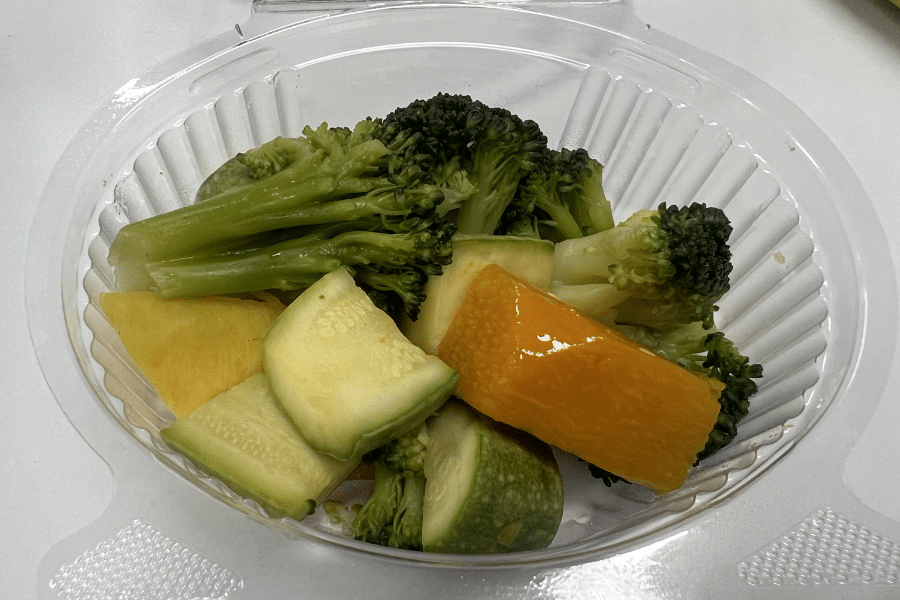
Adding ice cubes to your steamer basket can help keep your vegetables bright and crisp. The ice slows down the cooking process, which helps preserve their color and texture.
When you add ice to the steamer, it creates a gentler steaming environment. This is useful for delicate vegetables that can easily become overcooked and lose their flavor.
Using ice in your steamer is a simple trick that can make a big difference. It ensures that your vegetables stay firm and tasty, which is great for any meal.
Soaking Potatoes

Soaking cut potatoes in cold water before frying helps remove excess starch. This simple trick makes your fries crispier on the outside while keeping them soft on the inside. It’s a chef cooking trick that’s easy to do at home.
When you soak potatoes, the water draws out some of the starch. This prevents the fries from sticking together and helps them cook more evenly. You’ll end up with perfectly golden-brown fries every time.
Letting the potatoes soak for at least 30 minutes can make a big difference. For even better results, you can soak them overnight in the fridge. This extra step is well worth it for delicious, restaurant-quality fries.
Using Parchment Paper

Lining your baking pans with parchment paper makes cleanup a breeze. Not only does it prevent food from sticking, but it also saves you time scrubbing pans. This simple trick is a favorite among many cooks.
Parchment paper is heat-resistant, making it perfect for baking cookies or roasting vegetables. It helps distribute heat evenly, ensuring your food cooks properly without burning. It’s a small yet effective tool for consistent results.
For those who love baking, parchment paper can be a game-changer. It reduces the need for extra grease or oil, leading to healthier cooking. Plus, it helps maintain the shape and texture of delicate baked goods.
Bacon in the Oven

Cooking bacon in the oven on a wire rack helps it cook evenly. This method also makes the bacon crispy without having to flip it. Plus, it keeps your stove clean from grease splatters.
Using a wire rack in the oven allows air to circulate around each slice of bacon. This means less fat and a more consistent texture. It’s a great trick to achieve perfect bacon every time.
Baking bacon in the oven is not only cleaner but also more convenient. You can cook a large batch at once, making it perfect for brunches or meal prep. No need to stand by the stove and monitor each piece.
Freezing Avocados

Freezing avocados is a great way to keep them from spoiling. Just cut them in half, remove the pit, and scoop out the flesh. Place the avocado halves on a baking sheet and freeze until solid. This method is perfect for making guacamole or adding to smoothies later.
When thawing frozen avocados, it’s best to leave them in the fridge overnight. This slow thawing process helps maintain their texture and taste. Once thawed, mash them up for a smooth and creamy consistency, ideal for spreads and dips.
To prevent browning, brush the avocado halves with lemon or lime juice before freezing. This little trick helps maintain the bright green color and fresh taste of the fruit. It’s a simple chef cooking trick that can make a big difference in your culinary creations.
Boiling Water for Ice

Did you know that using boiled water can make your ice cubes clear? Boiling removes air and impurities, which often cause cloudiness in ice. This simple trick can make your drinks look more appealing and professional.
For the clearest ice cubes, boil the water and let it cool before freezing. This method works because boiling reduces the amount of dissolved gases and minerals, leaving you with crystal clear ice every time.
You don’t need any special equipment to get clear ice cubes. Just boil some water, let it cool, and pour it into your ice tray. It’s a neat little trick that chefs often use to elevate their presentation.
Microwaving Garlic

Ever struggled with peeling garlic? Just pop the cloves in the microwave for 15 seconds. The heat loosens the skin, making it super easy to peel off.
Did you know? Microwaving garlic not only helps with peeling but also slightly warms it up, making it easier to chop and crush for your recipes.
For a quick tip, try microwaving garlic cloves to remove the strong odor from your hands. The brief heat treatment reduces the smell, giving you a more pleasant cooking experience.
Storing Apples with Potatoes
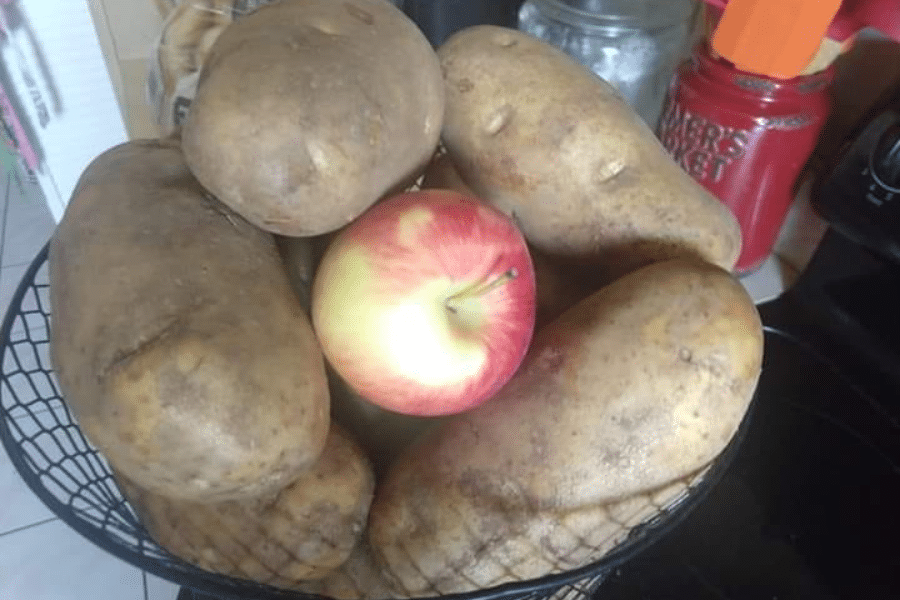
Did you know that storing apples with potatoes can keep the potatoes from sprouting? Apples give off a gas called ethylene that stops the growth of sprouts, making your potatoes last longer and stay fresh.
When you store apples and potatoes together, make sure they are in a cool, dark place. This helps the ethylene gas from the apples work better and keeps both fruits and vegetables in good condition.
This simple trick not only saves you money by extending the shelf life of your potatoes but also reduces waste. It’s an easy tip that every home cook can use to make their kitchen more efficient.
Freezing Leftover Wine

If you have leftover wine after a meal, don’t let it go to waste. Pour it into ice cube trays and freeze. These wine cubes are perfect for adding a splash of flavor to your sauces and stews.
Frozen wine cubes are a handy trick in the kitchen. Instead of opening a new bottle, just pop a cube into your dish. It’s a quick way to enhance the taste without any extra effort.
Using wine cubes in your cooking can elevate your dishes. They melt quickly and blend smoothly into your recipes, giving you that rich, deep flavor without overpowering your food.
Using a Spoon for Ginger

Peeling ginger with a spoon is a neat trick. Unlike a knife, a spoon can remove the skin without taking away too much of the root. This method helps you get the most out of your ginger with minimal waste.
Using a spoon to peel ginger is also safer. The rounded edge of a spoon is less likely to cut you compared to a sharp knife. It’s a great way to keep your fingers safe while prepping your ingredients.
Another advantage of using a spoon for ginger is its ease of handling. A spoon can easily navigate the ginger’s bumpy surface, making it simple to peel even the trickiest parts. This makes the whole process quicker and more efficient.
Using Salt to Clean Cast Iron

One great trick for cleaning cast iron is to use coarse salt. Just pour some salt into the pan, scrub with a paper towel or cloth, and then rinse. It helps lift the stuck-on food without harming the seasoning.
After cooking, let the pan cool a bit before cleaning. Then sprinkle coarse salt in the pan to scrub off food bits. This method keeps your pan’s surface smooth and well-seasoned, perfect for more chef cooking tricks.
Remember to dry your cast iron pan thoroughly after cleaning with salt. Moisture can cause rust. You can place it on a low burner for a few minutes to ensure it’s completely dry. This step is key to maintaining your cast iron’s longevity.
Cooling Pasta with Milk

Instead of rinsing your cooked pasta with water, try using milk. This trick helps the cheese stick better when making mac and cheese. It might sound unusual, but many chefs swear by this method for a creamier dish.
When you rinse pasta with milk, it absorbs some of the liquid, which can make the final dish richer. This small step can elevate your homemade mac and cheese to a new level of deliciousness without much extra effort.
Using milk to rinse pasta also keeps it from clumping together. This can be especially helpful if you’re not mixing the pasta with the cheese sauce right away. It’s a simple trick that can make a big difference in your cooking.
Using Ice Water for Veggies

After blanching vegetables, dunking them in ice water instantly stops the cooking process. This helps keep your veggies crisp and bright, making them look and taste fresher for longer. It’s a simple chef cooking trick that guarantees great results.
Blanching followed by an ice water bath is especially useful for green veggies like beans and broccoli. The cold shock helps maintain their vibrant color, preventing them from turning dull or mushy. This trick is a game-changer for prepping veggies ahead of time.
Using ice water after blanching not only keeps veggies crispy but also locks in their nutrients. This method is perfect for preserving the flavor and health benefits of your produce, making it a go-to technique for home cooks looking for easy ways to elevate their dishes.
Microwaving Corn
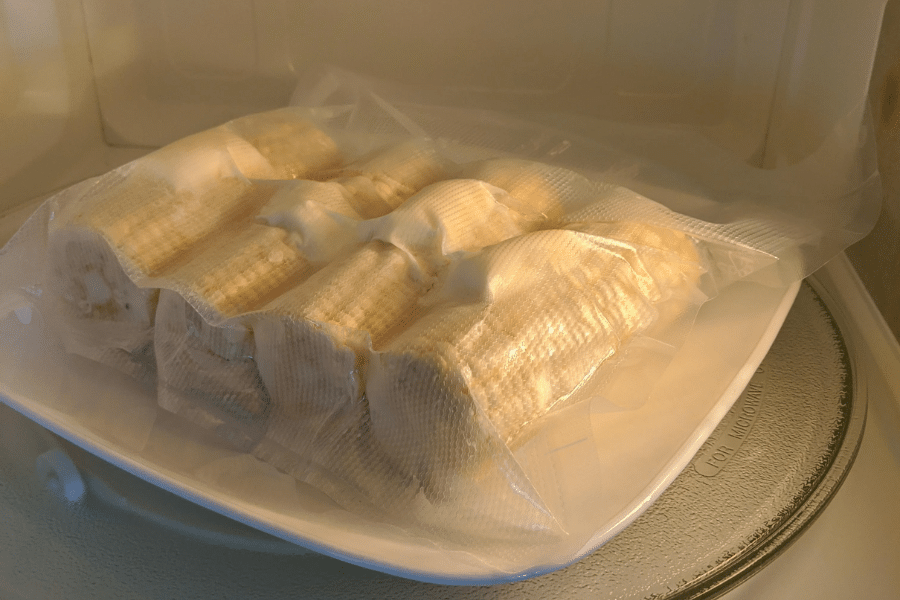
Microwaving corn in the husk is a quick and easy way to get perfectly steamed corn. The husk traps the steam, which cooks the corn evenly. This method is perfect for a fast side dish or a snack.
To microwave corn, simply place the corn with the husk still on in the microwave. Cook it on high for about 4 minutes. The steam inside the husk will help cook the corn, making it tender and juicy.
After microwaving, let the corn cool for a minute before removing the husk. You’ll find that the husk and silks come off easily, leaving you with perfectly cooked corn ready to eat. This is a hassle-free way to enjoy fresh corn.
Using a Pizza Stone

A pizza stone can help you get a crispy crust on your homemade pizza. To use it, place the stone in your oven and preheat it to around 500 degrees Fahrenheit. This ensures the stone is hot enough to cook the pizza evenly.
When using a pizza stone, it’s important to let the dough rest at room temperature for a bit before placing it on the stone. This prevents the dough from shrinking and helps it cook more uniformly, giving you a delicious pizza every time.
After baking, leave the pizza stone in the oven to cool down gradually. This prevents the stone from cracking due to sudden temperature changes. Cleaning the stone is easy—just scrape off any leftover bits and avoid using soap, as it can seep into the stone.
Adding Sugar to Tomato Sauce

When making tomato sauce, adding a pinch of sugar can make a big difference. It helps to balance the acidity of the tomatoes, making the sauce taste smoother and more flavorful.
A small amount of sugar in your tomato sauce can enhance the natural sweetness of the tomatoes. This simple chef trick can elevate the taste of your homemade sauce without much effort.
If your tomato sauce tastes too tangy, a little sugar can be the perfect fix. This easy addition can transform your sauce, making it more pleasing to the palate and enjoyable for everyone.
Using a Damp Towel for Mixing

When mixing ingredients, place a damp towel under your bowl to keep it from moving around. This simple trick makes the mixing process easier and more stable, preventing spills and messes.
A damp towel under your bowl not only keeps it steady but also frees up your hands to focus on mixing. This can be especially helpful when you need to mix vigorously or for an extended period.
Using a damp towel is a common trick among chefs because it helps maintain control over the mixing process. It’s a small step that can make a big difference in how smoothly your cooking goes.
Cooling Bread with a Towel

When you wrap freshly baked bread in a clean towel, it helps to keep the crust soft as it cools. This is a simple trick that ensures your bread remains tender and delicious.
Using a towel to cool your bread can also help absorb any extra moisture. This prevents the bread from becoming too soggy, making it perfect for sandwiches or toast.
Another benefit of this method is that it protects the bread from drafts that can make it cool too quickly and dry out. Wrapping it keeps the bread fresh and tasty for longer.
Using Citrus Zest

Adding citrus zest to your dishes can bring a pop of fresh flavor. The zest, which is the outer part of the peel, has aromatic oils that make your food taste even better.
You can use citrus zest in both sweet and savory recipes. Try adding lemon zest to cakes or lime zest to salads for an extra kick of flavor.
When zesting, make sure to only take the colored part of the peel. The white part underneath, called the pith, is bitter and can ruin the taste of your dish.
Two-Plate Trick for Cherry Tomatoes

Ever wonder how chefs slice cherry tomatoes so quickly? Here’s a simple trick: place a bunch of tomatoes between two plates. Then, run a knife through the gap. It’s fast and easy, letting you slice multiple tomatoes in one go!
This method not only saves time but also keeps your fingers safe. By using the plates to hold the tomatoes in place, you can avoid the risk of cutting yourself. Plus, it’s a great way to get even slices every time.
Whether you’re making a salad or a garnish, this trick is perfect for busy cooks. It’s a little secret that can make your prep work more efficient and enjoyable. Give it a try next time you need to slice cherry tomatoes!
Using a Potato Masher for Guacamole

Mashing avocados with a potato masher is a great trick for making guacamole. This method keeps the texture chunky, which many people prefer over a smoother blend. Plus, it’s quick and easy, saving you time in the kitchen.
Using a potato masher for guacamole also lets you control the texture better. You can leave some bigger pieces of avocado for added creaminess and bite. It’s an approachable technique that even beginners can master without any special skills.
Another benefit of mashing avocados with a potato masher is that it helps to evenly mix in other ingredients like onions, cilantro, and lime juice. This ensures every bite of your guacamole is flavorful and well-balanced. It’s a simple but effective chef cooking trick.
Using a Cheese Grater for Butter

Grating cold butter with a cheese grater is a great trick to make mixing it into flour easier. This method helps achieve a good texture in baked goods like biscuits and pie crusts, without the hassle of cutting butter into small pieces.
When you use a cheese grater for butter, you get evenly sized pieces that blend smoothly into your dough. This technique is especially useful for recipes that call for cold butter, ensuring it doesn’t melt too quickly and ruin the texture.
Besides making the process simpler, grating butter can also save you time in the kitchen. By skipping the step of cutting butter into chunks, you can move on to the next steps of your recipe faster, making baking more enjoyable.
Using a Water Bath for Custards

Using a water bath when baking custards helps to cook them evenly. The water bath ensures a gentle, consistent heat, which is key to achieving that smooth, creamy texture we all love in custards.
To set up a water bath, place your custard dish in a larger pan and add hot water until it reaches halfway up the sides of the dish. This method prevents the edges from cooking faster than the center, avoiding a curdled texture.
A water bath is useful for more than just custards. It’s great for baking cheesecakes and other delicate desserts, helping them to cook slowly and evenly, preventing cracks and ensuring a perfect finish every time.
Using a Muffin Tin for Condiments

Using a muffin tin to serve condiments at parties is a simple and practical trick. It keeps different sauces and toppings in one place, making it easy for guests to help themselves without creating a mess.
This method not only makes serving more organized but also saves space on the table. Instead of multiple bowls or plates, you have one compact tin that holds everything. It’s perfect for outdoor gatherings or casual get-togethers.
Cleaning up is a breeze when you use a muffin tin. Since it’s all in one container, you only have one item to wash afterward. Plus, it’s a great way to recycle an everyday kitchen item for a new purpose, adding a touch of creativity to your party setup.
Blanching Almonds

Blanching almonds is a simple trick to remove their skins. Just soak them in hot water for a minute, and the skins will come right off. This makes them perfect for recipes where you need skinless almonds.
After blanching, almonds are easier to chop and grind, making them ideal for baking and cooking. This technique is especially useful for making smooth almond paste or marzipan where the skin can be a texture issue.
Not only does blanching make almonds easier to handle, but it also enhances their taste and texture for dishes. Skinless almonds blend better in sauces and desserts, giving your recipes a professional touch.
Using a Ruler for Even Dough

To get perfectly even cookies or pastries, grab a ruler and measure your dough. This simple step ensures each piece is the same size, making your baking look professional. Even thickness helps everything bake evenly.
Rolling out dough can be tricky, but using a ruler makes it easy. Just measure the dough’s thickness as you go. This way, you avoid thin spots that could burn or thick spots that stay undercooked.
A ruler isn’t just for the edges. Use it to check the middle of your dough too. Keeping everything uniform ensures consistent results. This little trick can make a big difference in your baking success.
Using a Meat Thermometer

Using a meat thermometer helps you cook meat perfectly. By checking the temperature inside, you can make sure it’s done just right without cutting it open. This little tool saves you from guesswork and keeps your meals juicy and safe to eat.
For different types of meat, there are ideal temperatures to reach. For example, chicken should hit 165°F, while medium-rare steak is perfect at 135°F. Knowing these temperatures helps you cook like a pro and impress your friends and family.
A meat thermometer is easy to use. Just insert the probe into the thickest part of the meat, avoiding bones and fat. Wait a few seconds for the reading, and you’ll know if it’s ready. This simple step can make a big difference in your cooking.
Spraying Measuring Cups

Spraying measuring cups with non-stick spray before adding sticky ingredients like honey or syrup makes cleanup a breeze. This simple trick helps ensure that every drop of your ingredient gets used, reducing waste and making your cooking experience smoother.
By using non-stick spray on your measuring tools, you avoid the frustration of sticky ingredients clinging to the sides. This method saves time and effort, letting you focus on the fun and creative aspects of cooking.
This handy tip is particularly helpful when baking, as it ensures accurate measurements. Sticky substances like molasses or peanut butter can be tricky to handle, but a quick spray prevents them from sticking, ensuring precise amounts in your recipes.
Using a Funnel for Filling
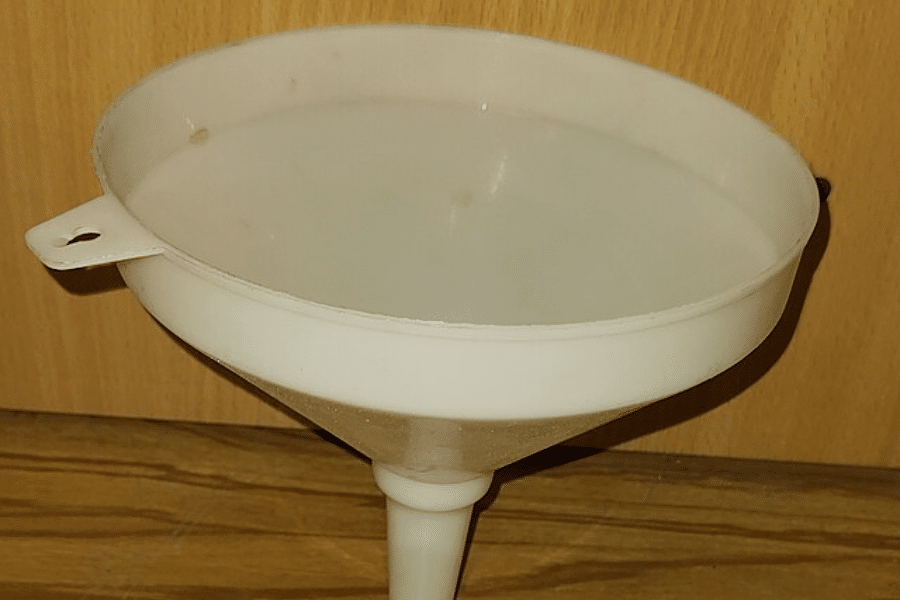
Using a funnel is a simple trick to avoid messes when transferring liquids or small grains into jars or containers. It helps direct the flow, making the process smoother and preventing spills.
Funnels come in different sizes and materials, so you can choose one that fits your needs. They are especially handy in the kitchen for tasks like filling spice jars or pouring homemade sauces into bottles.
A funnel can also be used for non-kitchen tasks, such as refilling your car’s oil or transferring paint into smaller containers. It’s a versatile tool that can save you time and effort in various situations.
Using a Bread Clip for Sealing Bags

Ever find yourself struggling to keep snack bags fresh? A simple bread clip can be your solution. Just twist the bag and secure it with the clip to keep your chips crispy and tasty for longer.
Bread clips are not only for bread bags; they work great for resealing any kind of snack. This little trick helps reduce waste and saves you money by keeping your food fresh longer.
Using bread clips for sealing bags is a handy kitchen hack every home cook should know. They are easy to use and can be reused multiple times, making them an eco-friendly option for food storage.
